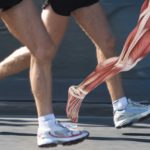
By Tina Paymaster, PHASE IV Functional Nutrition & Health Specialist
It’s likely that by now you’ve heard the term “ketogenic diet.” Many athletes, personal trainers and even doctors are praising it as the optimal diet for weight loss and overall health.
Some of the main benefits cited have been:
- Increased memory and cognition
- Improved focus
- Reduced headaches/migraines
- Reduced sugar cravings
- Acne reduction
- Reduction in cancer cells
- Heart disease prevention
- Lower blood pressure
- Lower blood sugar and insulin levels
- Lower triglyceride
- Improved cholesterol profile
- Reduced inflammation
- Improved energy levels
- Improved gastrointestinal health
- Beneficial in treating neurological conditions such as epilepsy, Alzheimers, Parkinson’s and MS
- Hormone balance in women with PCOS
- Improved fertility
- Improved vision
With this long list of benefits, it’s no wonder more and more people are going “keto.” However, with any diet, there can be benefits and consequences and that’s what we’re here to discuss today.
WHAT IS THE KETOGENIC DIET?
The ketogenic diet is a low carb, high fat diet that puts the body into a state of ketosis. When the body is starved of carbohydrates, blood sugar levels drop and the the liver metabolizes fat into molecules called ketones to be used as energy.
A typical ketogenic diet consist of 70-85% fat, 15-20% protein and only 5-10% carbohydrates.
Typically when you eat something high in carbohydrates, the body will break down that food into glucose and use it as its primary source of energy since it’s the easiest molecule for the body to convert to usable fuel. Then insulin is released to help process the glucose in the blood stream and deliver it to various areas of the body. Since glucose is so readily available, the body won’t metabolize fat for energy because it doesn’t need to. If there is to much glucose, the body will store it in the liver and muscles as glycogen and eventually store it as fat. However, when the body runs out of glucose and glycogen, that’s when ketosis happens.
Therefore, by literally starving your body of carbohydrates, you force your body to reach for fat as its main source of energy instead of glucose, which can stimulate weight loss and other health benefits as stated above.
THE HISTORY OF THE KETOGENIC DIET
As far back as 500BC, Hippocrates, a physician in Ancient Greece also known as “The Father of Modern Medicine,” was treating and curing epileptic patients through fasting, which essentially puts your body into a ketogenic state.
From about 1911-1921, various doctors conducted research on the effects of fasting on numerous medical conditions, specifically epilepsy. Many patients in these studies saw dramatic improvements in their conditions from extended periods of fasting.
In 1921, Drs. Stanley Cobb and W.F. Lennox discovered that it was a change in the body’s metabolism that improved the epileptic seizures. This occurred as a result of the body going into a state of ketosis from fasting or a very low carbohydrate diet. Soon thereafter, Dr. Russel Wilder developed the Ketogenic Diet as an alternative to fasting and demonstrated its efficacy in the treatment of epilepsy.
In 1970, Dr. Atkins popularized the low-carb diet fad as a means for weight loss, which began with a strict 2-week ketogenic phase.
THE RISE OF THE KETOGENIC DIET
Changing your metabolism and forcing your body into fat-burning mode is a huge reason why the ketogenic diet is seeing its popularity rise in the past few years. Because of the extreme conditions the body goes under, there are often quick results – which is what everyone wants these days. However, according to Lisa Cimperman, R.D.N., a clinical dietician at University Hospitals Case Medical Center in Cleveland, Ohio, the weight loss is primarily water weight.
With the rise of metabolic conditions such as obesity and diabetes and the continued obsession with looking like celebrities and Instagram models, more and more people are becoming desperate for quick solutions.
DANGERS OF THE KETOGENIC DIET
As with most extreme diets, there are pros and cons to consider. It’s important to remember how the ketogenic diet developed in the first place – it was meant to mimic the benefits of fasting on serious medical conditions.
Putting the body into these fasted states was meant as a means to heal the body from serious health conditions, not for long-term use to sustain health for the every day person.
There are certainly benefits to reducing carbohydrates from processed foods and refined sugars and flours. However, long-term adherence to a severely low carb/high fat diet can have its negative consequences as well.
Several studies have linked prolonged ketosis to gastrointestinal issues such as constipation, nausea, vomiting and diarrhea. The liver produces bile which helps fat to be absorbed into the blood stream. However, if the liver is congested and not functioning optimally as a result of poor diet and lifestyle habits, eating too much fat can cause serious health issues because your liver will not be able to process it, leading to gastrointestinal complications.
Other potential conditions that have been cited as a result of long-term ketosis are kidney stones, muscle cramps/weakness, hypoglycemia, impaired mood/cognition, nutrient deficiencies, skeletal fractures, loss of muscle mass, reduced immune function, cardiomyopathy, heart arrhythmia and menstrual irregularities.
The Inuit people from Alaska, who eat a primarily high fat diet from animal fat, have actually developed a gene to offset the prolonged effects of ketosis, because the human body is aware that this is not a one-size-fits all solution and extreme conditions and cause extreme consequences.
SO NOW WHAT?
At PHASE IV, we’ve been training athletes and the general public in shifting their metabolism to choose fat as its main source of fuel for decades. There are obvious benefits to this beyond just weight loss as noted previously. Increased energy, athletic performance and cognitive health are just a few.
However, restriction, deprivation and pain do not have to be part of the equation and can often lead to serious health conditions and loss of willpower.
Another important point to remember is there is no one diet that is the best for everyone. Ever go on the same diet as your best friend only to watch them shed weight and the scale not budge and inch for you? Every person’s physiology is unique. Using metabolic testing such as the RMR (Resting Metabolic Rate) test and VO2 test can help determine your body’s unique needs.
The truth is, the body needs carbohydrates for basic every day functioning, just as it needs fats (that’s why the low-fat/non-fat craze of the 1980s didn’t work out so well.) The optimal way to train your body to burn fat is to do it in a safe progression, or what is called Periodization Training.
At PHASE IV, we often start clients on a less severe low carb, moderate protein, high fat diet and match their activity level to that. They start their training slow and easy to stay in their fat-burning zones. This is how you condition your body to choose fat over carbohydrates and literally shift your metabolism. These zones are determined by a VO2 test, so each client gets a completely personalized plan based on their physiology and metabolism.
As time and intensity eventually increase in the training programs, the macronutrient and caloric needs of the body need to change as well. This is necessary to avoid inflammation, low energy, poor athletic performance, loss of muscle mass and weight gain. This may mean increasing carbohydrates from vegetables, fruits, whole grains and legumes and reducing fat.
You should never need to go on a severely restrictive calorie/macronutrient diet to achieve your health and fitness goals. In fact, doing so for a long period of time could actually slow down your metabolism and lead to poor fitness and athletic performance.
Want to learn more about how PHASE IV can help shift your metabolism into a fat-burning machine in a safe and effective way? Schedule a complimentary 30-minute consultation with a PHASE IV specialist today. Call us at 310-582-8212 or send us a message here.
Want more nutrition and fitness tips? Sign up for our newsletter and never miss another article








